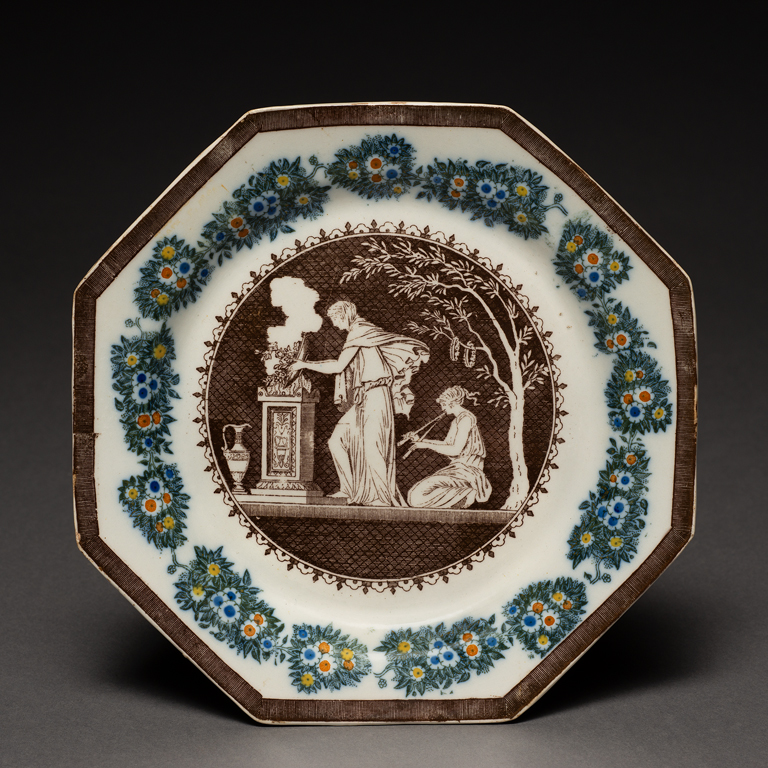| Maker(s): | Wedgwood, Ralph; Wedgwood & Co. | | Culture: | English
| | Title: | plate
| | Date Made: | 1790-1797
| | Type: | Food Service
| | Materials: | ceramic: lead-glazed, refined white earthenware (pearlware, china glaze), high temperature underglaze oxide colors, transfer printing
| | Place Made: | Great Britain: Stoke-on-Trent, Burslem
| | Accession Number: | HD 2022.36
| | Credit Line: | Hall and Kate Peterson Fund for Minor Antiques
| | Museum Collection: | Historic Deerfield
|
|

|
Description:
Ralph Wedgwood (1766-1837) was the eldest son of “Useful” Thomas Wedgwood (1734-1788), the cousin and partner of Josiah Wedgwood (1730-1795). Ralph showed an early talent for the potting business, especially in technical experimentation and innovation. By 1786, he established his own independent business employing men to produce glazes and colors to his recipes. Thomas Wedgwood purchased the Hill Works based in Burslem with the intention of taking his two sons into business. Each partner would contribute different skills to the venture; Thomas brought practical potting experience, Ralph supplied his technical abilities, and Samuel Wedgwood (1768-1790) had an aptitude for languages and sales. After the unexpected death of their father in 1788, Ralph and his younger brother Samuel took over the Hill Top Works. After Samuel's death in 1790, Ralph managed the factory independently and expanded his business to include a wholesale and retail shop in London. When France declared war on Britain in 1793, foreign markets for pottery closed and merchants’ bills remained unpaid. The war’s end was closely followed by a deep financial depression that forced many Staffordshire potters out of business. Ralph Wedgwood declared bankruptcy in 1797. During his tenure, the Hill Top Works produced fine table and ornamental earthenwares with painted, printed, and slip or “dipped” decoration. One of his achievements was the production of multi-colored, underglaze transfer printing on earthenware using a paper tissue method. This octagonal plate is a very early example of two-color printing on one piece. The central pattern and outer border are printed in brown. The inner border design of a string of flowers is printed in blue-green with a bluish wash added and blue and yellow colors painted to create the interesting floral pattern. A chemical analysis of this second underglaze printed color with a greenish blue hue would be necessary to make a final determination of the exact makeup of this color. This plate is part of a set of dinnerware in octagonal shapes given the name “Etruscan Figures” or “Classical Figures with Daisy.” Ralph Wedgwood’s Shape and Pattern Book still exist in the V&A/Wedgwood Archives and this particular printed scene and border are noted.Octagonal plate, made by Ralph Wedgwood, Hill Pottery, Burslem, Staffordshire, England, c. 1790-1797. Pearlware plate with multi-colored transfer printed design. “Etruscan Figures” also known as “Classical Figures and Daisy” Pattern. Stamped “WEDGWOOD & CO.” on underside.
Subjects:
Pottery; glaze (coating by location) Link to share this object record:
https://museums.fivecolleges.edu/detail.php?t=objects&type=ext&id_number=HD+2022.36 |